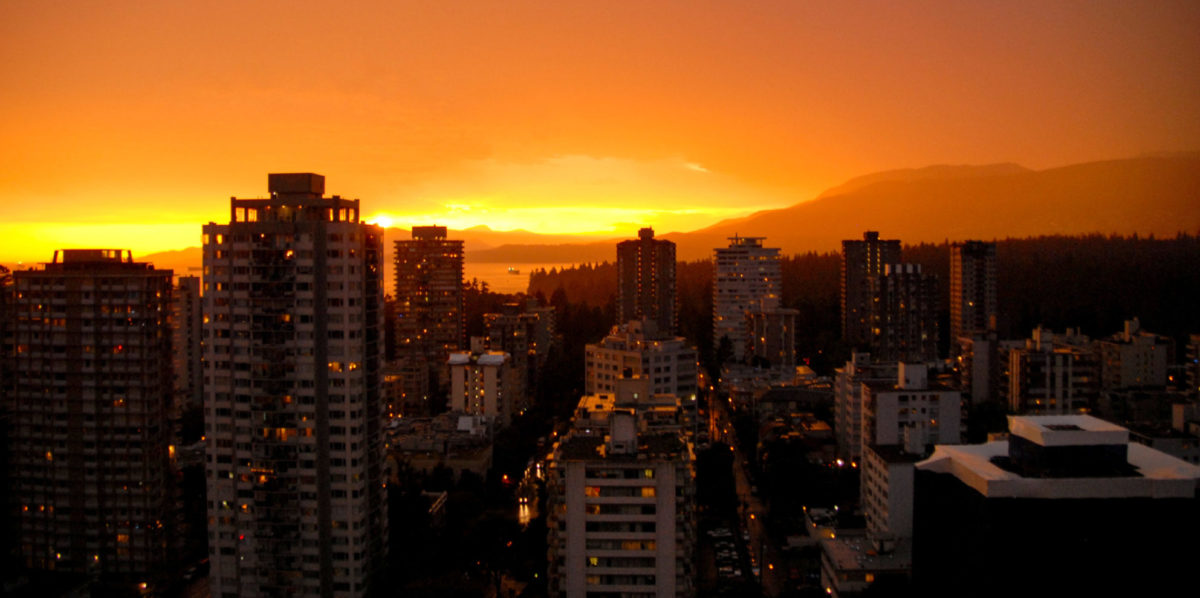The City of Vancouver is prepping for another hot summer.
Although, hopefully not as hot as last year. One year ago this week, much of British Columbia was enveloped in a heat dome.
A heat dome is when the atmosphere traps hot ocean air over a large land area. It can last for weeks due to air moving slowly in the hot temperatures.
The 2021 heat dome lasted from June 25 -July 7. Temperatures peaked at nearly 50 degrees Celsius and nearly 1,400 people are estimated to have died due to the oppressive heat.
The heat dome also created the conditions that allowed multiple large forest fires to spark across the province, including in Lytton, British Columbia, which destroyed the small 250 resident community.
Vulnerable populations hit especially hard
In urban areas, the ones who were hit especially hard by this extreme weather event were the elderly and Vancouver’s houseless population. People in vulnerable situations turned to services provided by charities and shelters – such as the Downtown Eastside Women’s Centre.
“Air conditioning is sort of a new concept in B.C. We never really needed it before,” explained Lisa Curry, Fundraising and Grants Coordinator for the Downtown Eastside Women’s Centre (DEWC) in an interview with rabble.ca. “So a lot of the housing is ill equipped for any sort of extreme weather scenario.”
Even more challenging for the women’s centre is that some of their clients are living outside, and that there are very few spaces in the Downtown Eastside where they can find respite from hot weather.
“[W]e have a population that lives outdoors and then we have a population of people who live in ill equipped housing,” Curry said. “[I]t’s also important to note that the Downtown Eastside has little to no green space; no trees. And so finding shade is actually a really difficult situation. It’s mostly just pavement. So we were greatly impacted.”
To compound the problem, Curry said that their neighbourhood struggles with opioid overdoses, which see emergency services like firefighters and paramedics often tied up and not readily available to support those suffering from the effects of extreme heat.
Curry said that last summer, the wait for an ambulance was as much as half a day during the heat event.
Caught off guard by the extreme hot weather
“I will say that last year took us off guard,” Curry said. “So I think as an organization we were definitely scrambling a bit.” Curry went on to explain DEWC prioritized providing information and hydration to the public.
“[W]e handed out information packets … about where people can find cooling centers, whether in the Downtown Eastside or outside,” she said. “We handed out water. We just really did our best through the kitchen and through donation call outs to make sure that there were lots of fluids.”
Curry said that DEWC also handed out slices of watermelon, lemonade, popsicles and freezies.
“We had several donation calls asking for specific things like hats and umbrellas and sunscreen and Gatorade,” she explained.
Uncertainty around government preparedness for future heat events
Curry explained that while the DEWC has received some support, she fears that the municipal, provincial and federal governments are still scrambling to adequately respond to extreme hot weather like heat domes.
“I do honestly think the city is scrambling as well,” she said. “I will say that Vancouver Coastal Health comes through in these kinds of scenarios and we were receiving water bottles from them during this weather event and also at the beginning of the pandemic. So there is support, but I think that governments are still trying to figure out how they’re going to address these issues.”
Curry said that the women’s centre drop-in facilities and their meal programs continue to be underfunded and have not received supplementary support to deal with extreme heat events.
City preparing a short-term response
The City of Vancouver has announced some measures to deal with extreme heat events in the short term, including increasing the number of available indoor cooling spaces at civic facilities; providing more water stations and misting stations in priority areas; maintaining a stockpile of bottled water that will be distributed during extreme heat; proactively communicating the dangers of heat with the public, and more.
A part of the City’s approach does include expanding greenspaces by adding parklets with increased shade cover and planting more trees.
The City is also issuing direct funding to organizations that support vulnerable populations, such as those who live in Single Room Occupancy (SRO) units.
On Tuesday, June 21, Vancouver City Council will receive a report from administration that, among other things, recommends the allocation of $100,000 to the Downtown Eastside SRO Collaborative Society.
The funding will be used to create information packets for at-risk individuals living in SROs, first aid training for 100 tenant volunteers including multi-lingual training, and to create emergency cooling rooms in privately owned SROs.
This is just one part, a large part, of $165,465.75 that city administration is recommending that the municipality provide to community partner organizations that support vulnerable populations.
The City stated that no one was available to respond to rabble.ca’s request for interview but did provide the following statement:
“The City is working with many partners at the community, and provincial level, as well as within the health sector, to take actions that will improve our collective heat response in the short-term, while identifying strategies and solutions to implement for the longer-term.”
How can I help?
If you’d like to support the Downtown Eastside Women’s Shelter, there are several ways you can help! Visit dewc.ca/waystodonate for more information.
This article is part of rabble’s series “The Boiling Point.” The Boiling Point examines the ways increasingly high temperatures due to the climate crisis are affecting our summers in Canada on a social, institutional, and ecological level. The series also explains how Canadians can take action against climate change and make real differences in their communities. Follow more stories here.



